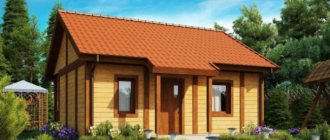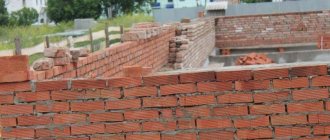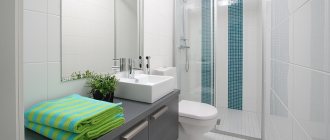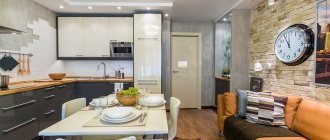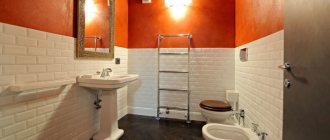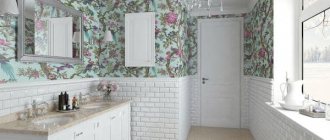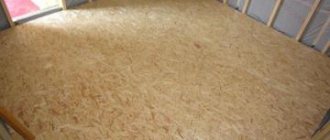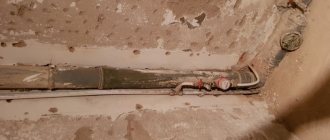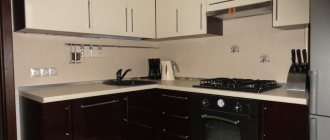Mosaics in the bathroom can cover the entire surface of the walls or be a separate decorative element in a separate area. This is not an ordinary finishing material, but a full-fledged method of artistic decoration, which allows you to move away from boring clichés and turn any design ideas into reality.
Mosaic for the bathroom Source interiorno.ru
Mosaic painting for a bathroom Source plitkahelp.com
Bathroom in Egyptian style Source happymodern.ru
Mosaic with glossy effect Source dizainexpert.ru
Features of finishing a bathroom with mosaics
A few specific nuances:
- To decorate a small bathroom in an apartment, small glossy mosaics in light colors are suitable.
- Also, a small room can be visually expanded with the help of a mosaic border of a contrasting shade, located not high from the floor.
- Decorating with mosaics around the mirror will not only give this product an aesthetic appearance, but will also protect it from water getting inside.
- With the help of this design, it is possible to perform zoning, for example, to separate the shower room from the bathroom.
Do you like mosaics in the bathroom?
Not really
Kinds
It is presented on the market in different colors and quality shades; it can be used to create any ornaments and decor. A comparison of mosaic types and the advantages of each of them is given in the table below.
| Selection criterion | Proposed options and their advantages | |||
| Form | Square (the most common elements, traditional version) | Rectangular (traditional design) | Round (allows you to create smooth lines and beautiful transitions) | Multifaceted (the ability to create unusual compositions) |
| Material of manufacture | Ceramics (easy to care for, variety of shades, low price) | Natural stone (a symbol of luxury, a rich palette of natural shades) | Glass (creates a 3D effect, does not require special care) | Natural wood (rich palette of shades, durable material) |
| By base type | Mesh (the mosaic is easy to cut, the elements are arranged in a certain order, suitable for installation on any surface) | Paper (ease of installation, quick and accurate laying of tiles, elements are easily fixed) | Without a base (used to create beautiful panels, installation requires certain skills) | |
| Bathroom design combinations | Single color (suitable for spacious bathrooms, the tiles have the same shape and size, use them to create a bright color accent) | Background (use white or a color close to it as a background, bright shades as an addition) | Gradient (a smooth transition from one shade to another, allows you to visually expand the room and raise the ceiling) | Mix (it is better to use contrasting shades) |
Glass
An excellent option for decorating a bathroom would be glass mosaic tiles, which allow you to create a 3D effect in the room and literally bring it to life.
The main advantages of glass tiles are their availability, relatively low price and ease of maintenance.
Glass tiles simply need to be wiped with a damp cloth and detergent.
To decorate your bathroom, choose glossy or matte tiles.
Main advantages of glass tiles:
- Presentable appearance.
- A large number of textures and shades.
- The likelihood of bacteria growing on the surface is zero.
- Temperature resistant.
- Anti-slip properties.
- Suitable not only for wall cladding, but also for floors.
Ceramic
Ceramic mosaic tiles for the bathroom are inexpensive; they are easy to cover walls with, even without the proper experience.
Ceramic tiles have water-repellent properties, it is possible to choose almost any color and pattern, but they are not suitable for finishing the floor - the material is very slippery.
Metal
Base – brass, stainless steel. The main advantages of such a mosaic are strength, resistance to temperature and mechanical damage. Suitable for tiling walls and floors, however, it can look very rough, so it should only be used in a specific bathroom interior design with mosaic tiles, skillfully combined with furniture and ceilings.
Stone and pebble
It is made from different types of stone, from pebbles to marble and granite. Stone mosaic adds rigor and richness to the interior, making it presentable. At the same time, the stone has good performance characteristics: it is durable, resistant to various types of influences, including temperature.
To make the stone look attractive, it is subjected to special processing, polished, and some areas are made “softer.” Stone does not like chemicals; wiping it with detergents is not recommended.
Use ordinary soapy water. These tiles are suitable for tiling rooms with high humidity and will be an ideal option for a kitchen or bathroom.
It is quite expensive, but at the same time, the option adds the natural shine of natural stone to the interior.
We also recommend watching - Characteristics and design of marble tiles for the bathroom
Advantages and disadvantages
To decorate the walls in the hallway, various materials are used that have their own unique properties.
One of the most popular finishing options is tiles, since the wall covering in the hallway is exposed to various impacts and gets dirty quite often, especially in the area near the front door. Wall tiles are available in different design options and will complement an interior decorated in any stylistic direction. This option for walls will be not only functional, but also a stylish solution.
This coating has many advantages and some disadvantages. Let's look at the main advantages of this coating:
- practicality;
- long service life;
- wide color palette;
- easy care;
- variety of types of masonry;
- safety.
However, one cannot help but mention the shortcomings. The joints between tiles are prone to contamination and can sometimes be difficult to clean. In addition, this is a rather cold coating, so it is not recommended for poorly heated rooms.
Mosaic shape
Common form options:
- Round. It becomes a bright accent of the entire interior and, thanks to its high decorative qualities, harmoniously complements other elements, giving the space extraordinary beauty.
- Honeycomb (hexagon). Hexagons allow you to create unique imaginary patterns and thereby give the interior an individual character.
- Square. It is the most common and classic form, most often used in decorating bathrooms.
- Rectangular. A fairly familiar option, distinguished by its versatility.
- Diamond-shaped. This geometric diamond shape will undoubtedly become a very stylish interior solution.
- Curly. Fantasy figured fragments of different shapes and sizes represent an extraordinary design approach that allows you to enrich the visual image of the room.
Due to a certain shape, you can create a truly spectacular and unusual decor, which will undoubtedly become the brightest and most eye-catching element of the entire design.
Materials
Mosaic tiles for the bathroom can be made from a variety of materials. When choosing it, you need to focus on the following parameters:
- Selected bathroom style.
- Price.
- Quality.
- Variability of color solutions.
Each of these points needs to be given special attention. The tiles can be decorated with bright colors and look great, but their technical characteristics and durability will be minimal. In order not to have to do repairs every year, you need to choose the right tiles once.
Mirror
Mirror tiles for bathroom cladding can be installed not only on the walls, but also on the floor and ceiling.
It is recommended to decorate only one surface in this way so that the bathroom does not turn into something incomprehensible and can perform its main functions.
The main advantages of mirror mosaic tiles:
- Environmentally friendly and safe material, does not cause harm to human health.
- It is made of ceramics, porcelain stoneware, which makes it durable and difficult to break.
- Resistant to temperatures and chemicals, does not require special care.
- Durability and practicality.
- Visual expansion of the room (suitable for small bathrooms).
Golden
Allows you to create a truly rich and luxurious bathroom.
Why choose gold mosaic tiles for your bathroom:
- Yellow color is a symbol of warmth and comfort. Allows you to create a comfortable environment, allows you to relax, which is simply necessary in the bathroom.
- Secretly declare your financial situation.
- Create a unique design.
- Visually expand or narrow the room by correctly setting accents.
- It lifts your spirits.
You should handle gold-colored mosaics with extreme caution so as not to overdo it and make the bathroom too pretentious. If the rest of the rooms in the house are decorated extremely simply, it is better to avoid gold in the bathroom.
Wooden
The wooden one looks presentable due to the natural shine of natural wood. A rich color palette allows you to choose the appropriate shade: from light walnut to rich chocolate and beech. Allows you to add a touch of uniqueness and originality to the interior.
Plastic
An affordable option for those who want to save money. However, plastic looks cheap and the material has low technical properties. Plastic tiles are easy to scratch and break, and there is a risk that they will come off over time (they are attached with regular glue). An excellent analogue of plastic are PVC panels designed to look like mosaics.
The hallway is the face of the house
The hallway in a house is an area with a high traffic load, regardless of how much usable area it has.
Therefore, the material for wall decoration should be practical, reliable and easy to restore or repair. Important! Ceramic tiles on the walls are especially relevant in those houses or apartments where children live, fans of painting on walls, and cats who are trying to transform any convenient place into a claw sharpener
Ceramic tiles on the walls are especially relevant in those houses or apartments where children live, fans of painting on walls, and cats who are trying to transform any convenient place into a claw sharpener.
Ceramic tiles are a traditional material for wall decoration in the bathroom or kitchen. But materials with a spectacular texture look perfect on the walls of the hallway. This role can be played by tiles imitating stone, metal, wood, silk, leather, silver fabrics, etc.
Pastel shades of beige from the Kashmir collection of the Kerama Marazzi factory are a good solution for a classic style
Advantages of mosaic coating
Mosaic coating is very popular. First of all, it creates a unique design by laying tiles with an interesting pattern. The technical characteristics of mosaics are in no way inferior to ordinary tiles; they are easy to lay, even without the proper experience.
The main advantages of mosaic tiles:
- Allows you to create a glossy and matte surface, giving the room shine and sophistication.
- Easy to care for.
- The matte finish prevents slipping.
- Wide color range.
- High performance characteristics.
- Will help bring any design idea to life.
Mosaics can be combined with regular tiles, using them to create accents. You can make an interesting panel with your own hands.
Plastic cladding
Finishing plastic refers to decorative coatings made of PVC - polyvinyl chloride, produced in the form of strips, panels and tiles of various sizes, designed for a specific installation method.
The main advantage of PVC cladding, which determines its demand for finishing bathrooms, is absolute moisture resistance. In addition, plastic finishing has other “advantages” that are common to products of any format and method of fastening:
- Hygienic, easy to keep clean;
- Wide choice of colors;
- Biostability – does not contribute to the formation of fungus, mold and does not react to them in any way;
- PVC is a dielectric with heat-shielding properties.
Plastic cladding also has general disadvantages:
- The material is flammable and also releases toxins;
- Manufacturers present PVC as an environmentally friendly material, but several types are produced - with and without chlorine-blocking additives, which is difficult for consumers to track;
- Over time, the finish fades and becomes deformed (it “leads”);
- Do not use abrasive compounds or aggressive solvents for cleaning.
There are several ways to decorate a ceiling with plastic; let’s look at the most popular ones.
Lining with PVC panels
The material consists of plastic strips of a certain width with a tongue-and-groove section of the sides, which allows you to assemble a solid covering from them.
Planks 10-12 cm wide are called PVC lining - its coating resembles the wooden cladding of the same name, wider products are called PVC panels.
The lining is produced in white, colored plain or with imitation wood. The profile of the strips is such that the coating is rusticated - this increases the aesthetics of the finish.
Plastic panels and lining are most often mounted on a sheathing made of wooden blocks or galvanized thin-walled profiles, which is mounted in a horizontal plane under the ceiling. This eliminates the need to level the base, but will lower the ceiling after finishing by at least the thickness of the profile and panel. On the other hand, the gap between the cladding and the ceiling is used for laying insulation and placing communications.
This design of plastic ceiling trim is good because the lathing is made from inexpensive materials, and the whole complex of work can be done with your own hands. Its disadvantages are common to all plastic claddings.
Bathroom finishing options
There are many options for finishing a bathroom. The choice of color and ornament primarily depends on the shape of the bathroom, its size and the height of the ceilings.
The task of the mosaic is to complement the interior, and not spoil it.
You can enlarge or narrow a room by selecting the right materials, colors, and textures.
Mosaic in a small bathroom
If the bathroom area is too small, you need to try to increase it. This effect can be achieved by laying tiles using different techniques. What you need to remember to expand a small bathroom and make it as comfortable as possible:
- It is best to decorate one of the walls (free from decorative elements) from the floor to the ceiling. Light shades should be used; matte surfaces should be abandoned.
- Option to cover the entire wall with light tiles. You will have to abandon dark shades and give preference to white, light elements, and prints.
- As an ornament, use diamond-shaped, rectangular, hexagonal elements, narrow vertical inserts.
- It is better to use darker shades at the bottom of the composition, gradually lightening it towards the top. Near the ceiling, the tiles should be as light as possible.
- Decorate the bath itself with light tiles to match the floor.
Colors that are suitable for decorating a bathroom with a small area: white, sand, blue, coffee, pearl gray.
Spacious bathroom design
A spacious bathroom is not always good, because the feeling of comfort and homely warmth can disappear from it.
The color scheme of mosaic tiles should slightly narrow the room and make the environment comfortable.
Decorate the opposite walls in the same way, the same goes for adjacent walls. It is better to avoid monochromatic cladding, since in this case the bathroom will look as dull as possible, despite the bright colors and interesting design.
Liven up your interior with monochrome or contrasting mosaic compositions that blend with your surroundings.
Using mosaics, divide a spacious bathroom into functional areas: shower, sink, toilet. A glossy finish is suitable for decoration. It is better to leave dark shades for cladding parts.
In what style is it better to decorate the walls?
Popular design options in various styles:
- Modern style. This style requires balance and requires a sense of proportion. Decorative plaster, brickwork, wood, glass panels or models that imitate marble, granite or other types of stone will be an excellent solution for modern design.
- High tech. To design a high-tech style, cold or light shades are often used. Uncomplicated and simple types of functional finishing will emphasize the fundamental features of this direction.
- Classic. Expensive finishing materials in a calm and noble color scheme would be appropriate here. Decor in the form of luxurious paintings, mirrors, stucco, sculptural elements, frescoes or panels will be a beneficial addition to the classical style.
- Eco style. Ecological style involves natural wall coverings, such as wood, stone or paper wallpaper.
Stylistic design allows not only to create a fashionable interior, but also to reflect taste preferences.
Use Cases
It is not recommended to cover all surfaces in the bathroom with mosaics; the room will become pretentious and uncomfortable. In addition, the material is not cheap. This material is best used to decorate one of the walls.
Using a mosaic pattern or panel, add a bright color accent to your bathroom that will visually expand the room.
Sink work area
The traditional option is to decorate only the work area near the sink with mosaics. This design will help solve several problems at the same time:
- Make it easier to clean the sink work area. This wall often gets water, soap and other products that can be difficult to remove from other materials. Soap scum is easily wiped off the mosaic, leaving no streaks or stains on the surface.
- Beautiful bathroom design.
Use a separate mosaic to decorate the area near the mirror or the wall opposite it. Mirror reflection will visually increase the number of colors and help make the bathroom truly bright and interesting.
Vertical surfaces
Focus on a vertical surface - for example, a free wall or a wall opposite a window. Patterns should not be too bright and catchy, because the bathroom should provide comfort and give peace of mind. The wall behind the bathtub or shower should not be decorated with mosaics, since it will be almost invisible.
Particular attention should be paid to the color scheme. The most reasonable option is to cladding the wall opposite the bathroom, so that while basking in warm water you can admire the beautiful patterns.
Floor
Decorating the bathroom floor with mosaics is an unconventional and interesting solution. Carpets and rugs are becoming a thing of the past; they have not been relevant for the bathroom for many years, since they do not absorb moisture well and quickly get dirty.
Using mosaic tiles on the floor, you can create something like a carpet and decorate the surface with colorful patterns. It will be pleasant to step on such a floor not only in shoes, but also barefoot. Mosaics can be used to decorate the entire surface, using calm colors, or a separate area: for example, an area near the bathroom or sink, in the manner of a rubber mat.
Panel
Using a matrix or chipped mosaic panel, you can easily decorate not only the walls, but also the floor or ceiling. Such decor can be placed both in a certain area and around the entire perimeter of the bathroom, which allows you to turn it into a single unique picture.
With an image
It is the main interior highlight and a bright accent that undoubtedly attracts attention. Thanks to the mosaic decoration with a pattern, it is possible to turn any fantasy idea into reality.
Combination of mosaic and tiles
This combination with tiles completely changes the appearance of the room and gives it a certain neatness, high cost and real irresistibility.
Mosaic honeycomb
The hexagonal shape is very popular in interior decoration. Honeycomb mosaic is a fairly active design element, which can become even more noticeable due to the bright color scheme.
Under the stone
It has a stylish and sophisticated appearance, a texture imitation of travertine, granite or marble stone and is distinguished by a rich natural color palette that gives the atmosphere uniqueness and harmoniously matches any style decisions.
Pebbles
The natural smoothness, pleasant-to-touch surface and uniqueness of pebble mosaics give the space smooth lines, natural shades and an attractive appearance.
Mosaic inserts
One or more mosaic stripes, depending on the location, can not only adjust the geometry of the space, but also provide a very effective partial cladding, which, thanks to the play of glare and soft shimmer, will endow the atmosphere with special mystery and sophistication.
Cladding of individual elements
When covering walls with mosaics, it is recommended to use a vertical arrangement of elements in order to visually enlarge the room and make it more spacious, and raise the ceiling. Several mosaic design options:
- Design the wall above the bathroom in such a way as to create the illusion of a real mountain waterfall: add the illusion of water drops, a beautiful bird, treetops, animals.
- In an apartment with a shower, make an imitation of water coming directly from the shower. This way you can create a beautiful waterfall.
- The most common option for the bathroom is to imitate raindrops on the wall. From moisture they begin to shine and give the room the necessary coziness.
To add some zest to the interior, tiling the bathroom itself (if it is white or light).
Rooms with complex geometry
The bathroom does not always have standard sizes and shapes of a square or rectangle, which can be easily decorated in any style. In private houses and cottages, bathrooms are often located in an attic room of non-standard size. Cladding asymmetrical walls is much more difficult.
Mosaic is an ideal option for rooms with complex geometry. When decorating the walls, you will not have to cut off excess pieces of tiles; the overuse of tiles will be minimal.
Even concave, convex and rounded walls can be decorated with mosaics, making them presentable and simply beautiful.
Stretch ceiling
The popularity of this type of ceiling decoration is high, and the choice of material is growing every year.
Thanks to the huge variety of artistic designs, stretch ceilings can be chosen to suit any taste and interior. Canvases with photo printing and 3D images are especially impressive.
Advantages of suspended ceilings:
- Ease of preparing the base for finishing;
- Fast installation - a few hours;
- Absolute resistance to moisture;
- It will “catch” water if it leaks from above.
"Disadvantages" of PVC canvases:
- Stretching requires skill and special equipment;
- High price of good quality canvases;
- Inaccessibility of communications located under the canvas;
- The power of the lamps is limited - the film is not heat-resistant;
- The material is easily damaged by a sharp object, after which the canvas can rarely be repaired.
The cost of stretched canvas depends on the type of material and manufacturer (quality). In Moscow and the Moscow region, prices for 1 m2 of canvas look approximately like this:
Prices for stretch fabrics
| Name | Unit change | Price, rub). |
| Film canvases | ||
| Russia | ||
| Matt/satin white | m2 | 90,0 |
| Matt/satin colored | m2 | 160,0 |
| Gloss white | m2 | 110,0 |
| Gloss colored | m2 | 175,0 |
| Germany PONGS | ||
| Matt/satin white | m2 | 170,0 |
| Matt/satin colored | m2 | 270,0 |
| Gloss white | m2 | 210,0 |
| Gloss colored | m2 | 280,0 |
| China MSD | ||
| Matt/satin white | m2 | 120,0 |
| Matt/satin colored | m2 | 210,0 |
| Gloss white | m2 | 160,0 |
| Gloss colored | m2 | 230,0 |
| Fabric sheets | ||
| Germany | ||
| D-Premium (Descor) fabric, white | m2 | 360,0 |
| France | ||
| (Clipso) fabric, white | m2 | 1110,0 |
It should be remembered that to the costs of film you need to add the cost of baguettes, baseboards, installation of canvas and installation of lamps (chandeliers). As a result, 1 m2 of stretch ceiling in place will cost:
- Film (China) – from 430.0 rub.;
- Film (Germany) – from RUB 510.0;
- Fabric (Germany) – from 880.0 rub.
Mosaic carpet
Replace the traditional carpet with a mosaic one. It is best to lay the mosaic in the center of the room or near the bathtub or shower.
Here you don’t have to limit yourself in choosing colors; not only pastel, but also bright shades are suitable. This design will look effective and stylish.
Shower room
Mosaics can be used to decorate not only the floor near the shower, but also the tray itself. In this case, it will also become strong and durable due to the special cement mortar. Resistant to moisture and long lasting.
This method will help make your shower safer if you choose a mosaic with an anti-slip effect.
Dressing table
Use tile mosaics to decorate the top of your vanity table. Design a beautiful panel without neglecting shades and colors. Unfortunately, making such a countertop yourself is not so easy, but with a strong desire, everything can work out without problems.
It is better to lay out mosaics of different shapes and sizes.
Screen for bathtub or tray
The space under the bathtub or shower tray can become a decorative feature rather than a gaping hole. Very often the screen is covered with the same ceramic tiles that were used in the decoration. But who’s stopping you from making a beautiful mosaic screen for your bathtub? This is especially true if the bowl itself has beautiful curved shapes.
To create a full-fledged beautiful interior with mosaics, in combination with the screen, you can decorate the wall above the bathroom with the same mosaic or lay out separate inserts.
Niches, shelves, columns...
There are a lot of options for combining tiles with mosaics. If the bathroom has engineered boxes, niches, racks and shelves for cosmetics and towels, then they can also be highlighted or decorated with mosaics. Usually, when covering complex elements with tiles, you have to spend a lot of time and effort on fitting and cutting them. And mosaics are perfect for decorating difficult places.
It is also quite difficult to veneer round or curved interior elements, such as columns. To decorate such structures, it is better to select mosaics with small elements.
Plumbing cladding
A rather rare, but very successful move is to line the bathtub itself or the washing bowl with a mosaic. It’s rare that a craftsman manages to do everything neatly and aesthetically, however, such use of mosaics also has the right to exist. In addition, if a shower is constructed in the bathroom, then it is more practical to lay out the shower tray with mosaic. To design complex geometric shapes, the elements should be the smallest - such modules are easier to size and glue.
Leveling the surface
Due to the small area, it is impossible to level each cube separately. Therefore, a flat object with a large area is taken, which is used to press down the surface of the mosaic layer and at the same time control the alignment of the seams between the individual fragments. To do this, use a hand grater to scrape off the putty.
While the glue has not hardened, the mosaic surface is cleaned from any glue drips that appear on it. In the case of polymer glue, denatured alcohol or simple vodka is used for this purpose. Removing excess glue between mosaic fragments can also be done with a screwdriver or a small spatula.
The final step is to grout the joints with a putty compound using a rubber spatula about 20 cm wide. The grout compound is allowed to dry slightly, after which its excess is removed with a sponge or rag soaked in water.
This coating technology is used not only for floors and walls, but also for the ceiling. After the adhesive substance has set, mosaic is a much more durable coating than even tiled ceramics. Unlike the latter, mosaic elements do not crack and are much more difficult to separate from the base.
Even if the mosaic peels off, its elements can easily be glued back into place.
To learn how to make a mosaic shower tray with your own hands, see the following video.
Source
Design ideas for a combined bathroom with mosaics
In a combined bathroom, using different mosaic tiles, it is possible to designate, highlight and visually separate certain functional areas or simply create an effective frame around individual elements.
The photo shows a bathroom with a contrasting fragmented mosaic design of the walls and floor.
This decor, due to its reliability, durability and practicality, allows you to decorate wall, floor or ceiling surfaces in the bathroom and create an elegant interior.
Color solutions
Color plays a big role when choosing mosaics for bathroom walls. It should not be too sharp, conspicuous and strongly attract attention. The bathroom is a comfort zone, the main task of which is to allow a person to relax and feel calm.
An excellent option for the bathroom would be simple colors that are as close to natural as possible: gray, brown, blue. The classic option is a white mosaic, suitable if the remaining walls are decorated with bright tiles or natural stone or wood.
If only one wall or a separate section of it will be decorated with mosaics, choose a multi-colored pattern.
The main thing is not to overdo it and not make the room too pretentious. It is not recommended to use more than three shades in one drawing.
A few rules for decorating walls with mosaic tiles:
- For a bright picture you need to use a pastel background. Decorate individual elements with contrasting shades.
- When choosing colors, it is worth remembering their combination with each other and with the entire interior. Use one color as the main color, the other two as an addition, there should be fewer such elements.
Pink
Pink is one of those shades that is perfect for the bathroom. Color can give a good mood in the morning and relieve accumulated emotions at the end of a hard day. Visually expands the room and illusorily gives it volume. Pairs with black and gold.
Blue and cyan
“Water” shades are ideal for the bathroom. Blue and light blue fit well into the design of a bathroom of any size and shape. In total there are more than a hundred shades of blue and light blue. Combine with white, gray, red.
Green
A color that can give peace and tranquility, harmony. Use both a pale shade of green and bright, saturated colors. Combines with brown and metallic, steel shades.
Violet
Purple is a dark shade, so you need to use it with caution so as not to overdo it and make the room too dark. Delicate violet, eggplant, and purple will look good in the bathroom. Combines with contrasting colors - yellow, orange, white, black.
Black
A stylish solution, the choice of which should be approached with caution. It is not recommended to use black mosaic as the main color; there is a risk of visually making the room smaller and making it uncomfortable.
But as an additional or contrasting color, black will look original. Combines with white, gray, rich blue mosaic, as well as red, yellow and purple.
Yellow
Yellow, like gold, adds liveliness to the room, making it “rich” and positive. Yellow mosaic looks very unusual and sets a good mood for the whole day.
To prevent the bathroom from becoming too pretentious, up to 70% of the area can be decorated in yellow.
As a second color, use blue, green, red, purple, black.
Brown
Any shade of brown, made to look like natural stone or wood, is suitable for the bathroom. Sand shades look good; use them to create a whole panel near the sink or shower. Combines with lavender, azure, pink.
Red
Red allows you to make a bright color accent. Suitable for decorating one work area, for example, near the bathroom, sink or mirror. Place the red mosaic on the bathroom itself, on the shower tray.
Do not combine red with black; it is better to replace it with sand, white, or brown.
White
White mosaic is a timeless classic option for decorating a bathroom. It can be used in two ways:
- White is the main color, against which additional shades will look brighter. White will visually increase the space of the bathroom, making it comfortable and cozy.
- The second option is to use white as an additional color against a bright background. This design will look very stylish and unusual.
The main advantage of white mosaic, in addition to its stylish and presentable appearance, is that stains from water and soap suds are not visible on it. Suitable for minimalist styles.
Grey
Use from the most subtle to rich gray shade. Combine with beige, yellow, black, gray. Neutral color adds calm. Use as a main color or as an addition.
How the work is carried out
To ensure that a mosaic shower cabin looks attractive and lasts as long as possible, the installation process must be followed. In this case, both the main stage and the preparation are important, so we will consider each stage separately.
Preparatory activities
As part of this stage, the following work must be carried out:
Glass mosaic adhesive must have the highest performance characteristics
It is very important to make ideal slopes so that the drainage occurs as efficiently as possible.
Main stage
The work should be carried out carefully to avoid defects, as they are very clearly visible later.
In general the process looks like this:
Marking should be done very carefully and accurately
The work is carried out very carefully and without haste
Important! Remember that the mosaic on the grid is glued to the base with the grid, and the version on paper is placed the other way around - with the paper facing out. After gluing several sheets, the paper is moistened with a sponge and, after getting wet, carefully removed, then, if necessary, the position of the sheets is adjusted.
Excess composition is removed with a sponge or soft cloth.
Examples of mosaic layouts
There are several basic layout methods, for example, seam-to-seam, diagonally, or many other options presented below.
Taking a running start
This installation resembles brickwork. Most often, to create this effect, rectangular elements are used, which move with every second row.
Net
It consists of ready-made matrices of small or large sizes on a mesh, which are glued to a specific surface, which can significantly simplify and facilitate finishing work.
Chess
The classic layout option, which is quite popular and provides the opportunity to advantageously emphasize the character of the interior.
Angular
Mosaic tiles, due to their plasticity, are perfect for corner decoration. This decor smoothes out the sharp corners of various protrusions or boxes and creates a spectacular flow of surfaces.
The photo shows a blue wall mosaic with a corner layout in the bathroom interior.
Linear
Due to continuous, intermittent, parallel, intersecting, symmetrical, broken, chaotic or other lines, for example, in the shape of a wave, the situation takes on a truly original appearance.
Laying features
Before laying, the tiles must be inspected for damage. For this purpose, it is better to lay out all the blocks on the floor or any other hard surface. They need to be measured and compared with each other so that the size is the same - this is necessary to create an even pattern.
Glue is immediately applied to the tiles. At this time, special markings are made on the wall and a screed is laid. Then the glue is applied to the wall. You should avoid a layer that is too thick - the glue will not have time to dry and after a while the tile will simply slide to the floor.
Cut the mosaic tiles with special metal tongs or a construction knife. After a few days, grout each seam without risking moving the tiles out of place.
Substrate options
- Paper. The chips are glued to the paper base with the front side. This makes it easier to apply them to the wall. There are two main disadvantages: firstly, if moisture gets on the base, a separate element may come off prematurely, for example, during transportation. And secondly, you can evaluate the result and integrity of the parts only after they are fixed to the wall (when the base is peeled off). So you will find out late about the presence of chips and cracks on the front side.
- Net. The principle of operation is slightly different here. The chips are glued on the back of the mesh, so you can immediately see their quality. The disadvantage of this base is that it reduces the area of contact between the tiles and the adhesive.
- Hitch. This is the most convenient base from a work point of view. The chips are connected to each other by drops of glue. Sheets come in larger sizes: 30 x 60 cm, which significantly increases the speed of working with them.
Preparation
First, prepare the wall. It should be as even as possible so that the tiles do not go into “waves”. The old coating will have to be removed; it fits well only on wood and drywall.
Required tools:
- Spatula for applying glue.
- A utility knife to cut the film.
- Metal tongs or a utility knife for cutting tiles.
It is recommended to putty the walls and coat them with a primer, and seal all cracks and recesses. You can level the wall using a building level, which shows the angle of inclination.
Marking
Marking is necessary to ensure that the tiles lie in even rows. The markings are applied with a pencil with a thick lead or a cord with a weight, which is attached to the ceiling and ensures a perfectly straight line.
Tile laying options:
- Basic . The tiles are laid alternately, on the same level. The distance between elements is minimal.
- Chess board . The layout is carried out according to the basic principle, but elements of contrasting colors are used, alternating with each other.
- Linear . The pattern is formed in even rows, the tiles are laid one after another.
- "On the run" . The sutures are displaced relative to the mosaic segment. Suitable for round mosaics and laying out panels.
- Modular . There is deliberate negligence, tiles of different sizes are placed on a special drawing.
Grout
Proceed to grouting the joints no earlier than one day after laying the tiles, otherwise the risk of moving them out of place is very high. For grouting you will need a spatula and a rubber sponge.
Remove the protective film (if any). Using a spatula, start grouting first horizontally, then vertically. Remove the remains with a sponge.
Preparatory stage
Before laying the mosaic on the shower floor, a check is made of the concrete or cement bases, which must withstand the weight of the finishing materials.
The planes of the walls and flooring are leveled. Water pipes and sewer lines are laid in pre-cut channels. It is recommended to consider the installation locations of service hatches intended for servicing water supply elements.
It is recommended to cover the walls adjacent to the pallet with a layer of cement with the addition of liquid glass. If you plan to install additional equipment in the shower stall (for example, a hydromassage device), then water pipes and electrical wiring are installed in the wall cavity in advance. There are designs with an additional seat that is screwed to the wall surface.
Selection of consumables
When laying a mosaic ornament, tile adhesive on a cement or polymer base is used. When choosing an adhesive composition, you must remember that glass mosaic has a transparent structure. The use of dark glue leads to a distortion of the color of the tile. Cement-based materials are used for walls made of concrete or plasterboard.
If partitions made of wood or plastic are installed in the room, it is recommended to use polymer-based glue. When laying finishing material on the floor and the lower edge of the walls, 2-component adhesive can be used. The material has increased strength and provides additional protection against water.
Required Tools
The minimum set of tools required to complete the work is as follows:
Installation of guy wires
Making wall cladding with mosaic tiles yourself is not so difficult. After the wall is leveled and primed, proceed to installing the screeds. Consider several features:
- The wall under the light mosaic should be painted white so that the bright shades do not stand out from the overall composition.
- Whiten the wall with lime milk, which will further disinfect the surface. Check the evenness of the walls using a level.
- It is better to decorate the walls with plain tiles and allocate a separate area for the mosaic. The background must be made in the same style.
First, the background mosaic tiles are laid on the wall; you can cut the tiles into small pieces using a construction knife. Glue up to 10 mm thick is applied to the wall (the thicker the material, the more glue needs to be applied). Press the tile tightly against the wall according to the marked stencil. Tap the surface with a spatula to ensure better adhesion.
Cover the front side of the film with film or paper to protect the seams from air entry. Apply grout every other day.
It is better to start installation from the most visible place, gradually moving to less noticeable places. The largest pieces should be located in the middle; it is better to move any trimming to the edges.
Aluminum slatted cladding
The difference with slatted PVC ceilings in the material of manufacture gives this finish the following advantages:
- Aluminum is heat-resistant - when choosing recessed luminaires, there is no need to worry about exceeding the power;
- Aluminum slats do not “lead” with time;
- The planks have a clear edge geometry;
- The best design of the lamellas - high-quality painted aluminum looks more impressive than colored plastic.
"Disadvantages" of aluminum slatted ceilings:
- Higher price than plastic;
- Aluminum is a conductor of electric current;
- Lack of thermal insulation properties.
In Moscow and the Moscow region, rack structures are installed by contractors at the following prices:
Prices for installation of slatted ceilings
| Type of work | Unit change | Price (RUB/unit) |
| Installation of a plastic slatted ceiling | m2 | 500,0 |
| Installation of a metal slatted ceiling | m2 | 750,00 |
| Installation of a spotlight in a ceiling structure | PC. | 350,0 |
